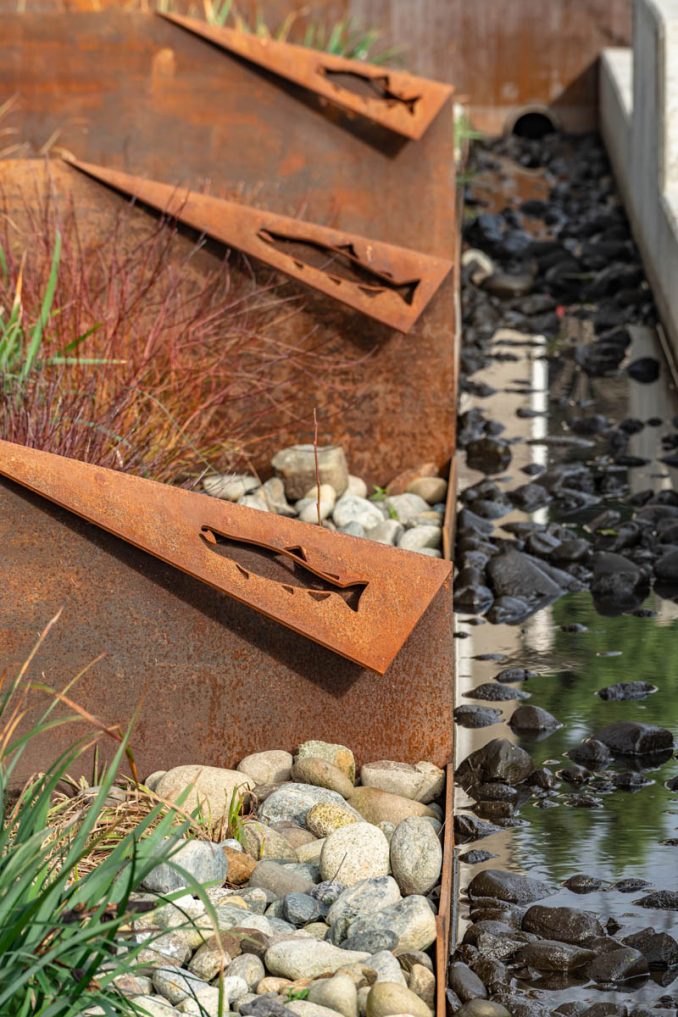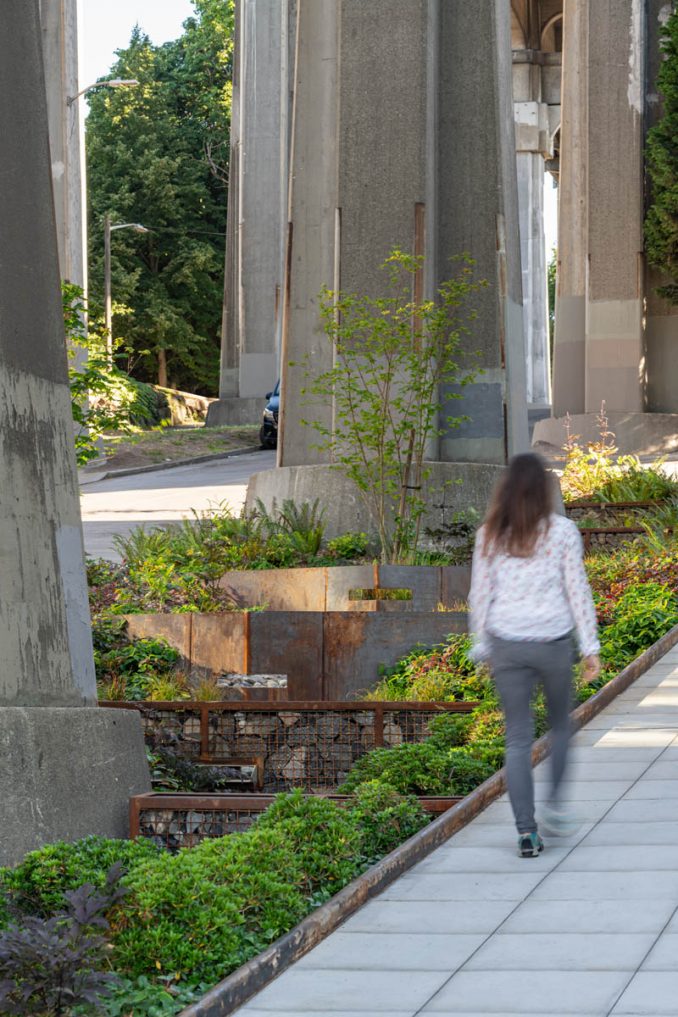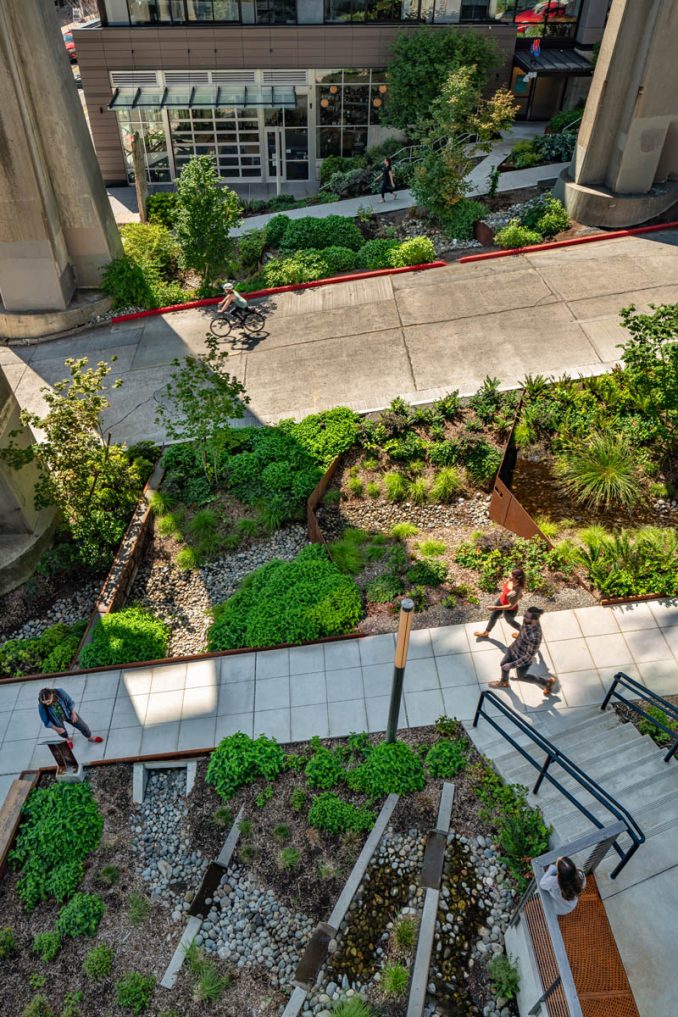
There are few places in America’s car culture more nefariously damaging to the environment than under the Aurora Bridge in Seattle, Washington. This 1930-era bridge, with Seattle’s iconic Fremont Troll underneath, sees an estimated 65,000 vehicles cross daily and is the first bridge built solely for automobiles. The tire dust and toxins from the bridge mix with rainwater and flow untreated directly into the lake below.
Over the past decade, researchers in the Pacific Northwest have identified thousands of chemicals in urban stormwater runoff. The bridge’s runoff is the most toxic researchers have encountered, estimated to be six times more than the national standard. These toxins create lethal conditions for the five salmon species that swim below the bridge in Lake Union during annual spawning runs. As a keystone species, the detrimental impacts on salmon health have a cascading effect on human and orca health in our region. Fortunately, researchers have discovered the effectiveness of using soil to filter toxins, eliminating their fatal impacts on an ecosystem.
Inspired by the research, our team took on the challenge to envision an innovative, large-scale, green infrastructure project to clean the toxic runoff from the bridge. The initial idea was simple:
- Leverage the project’s adjacency to the Aurora Bridge.
- Divert a downspout into a planted area.
- Clean the water before it reaches Lake Union and the salmon.
Departing from the more common flat swale, the team located and embraced the site’s steep roadway grade and built overflow terrace bioretention cells with Corten Steel weirs at every two feet of grade change. The cells intersperse with native plants that provide a robust forest floor below the overhead canopy of bridge structures and flowering plants that support a variety of pollinators. The vegetation naturally scrubs stormwater, allowing dissolved pollutants to settle before the filtered water is diverted back into Lake Union.

With interpretive art elements, the project tells the “water story” and uses Corten Steel in all three phases, unifying the overall aesthetic. With artistic nods to salmon species migration and lush green plantings throughout, the experience is educational and beautifies the neighborhood.

Collectively, this 3-phase project treats up to two million gallons of water annually from the entire north span of the Aurora Bridge by incorporating native plants and soil terraces on three sites along the public right-of-way. The Aurora Bridge Swales functions as a natural filter and is a powerful example of private development’s ability to deploy a large-scale environmental response, approaching 100% effectiveness at reversing pollution’s impacts. This multi-pronged solution:
- Improved water quality
- Enhanced biodiversity
- Improved air quality
- Beautified the urban environment
- Mitigated heat-island effects
- Raised public awareness
- Provided a replicable model for future sites
Testing the water entering and leaving the swales confirmed measurable filtration of an extensive range of contaminants. As the third phase neared completion, researchers successfully isolated the specific chemical responsible for the death of salmon, 6PPD-quinone, derived from a preservative found in all tires. The vision was now palpable.
Above all else, a major benefit of this project is its replicability. When bridges align with a roadway below, as occurs with most urban bridges, green infrastructure is especially efficient when the overflow at the end of the swale can connect back to the existing storm pipe infrastructure that previously carried the unfiltered water to the lake. This design can save municipalities from spending money on mechanically filtering the water at expensive treatment facilities.
In fact, the Seattle Public Utilities has now begun programs to incentivize similar improvements with private developments. And a case study of the swales has been included in a United Nations Guide for Sustainable Practices model to teach professional designers to include green infrastructure as standard practice. This first-of-its-kind project is an example of how landscape architecture can serve as an agent of change, providing communities with a call to action to improve the health of our world.
Aurora Bridge Swales
Design Firm: Weber Thompson
Collaborators:
Architect: Weber Thompson
Civil Engineer: KPFF
Client(s): Clean Lake Union & CoU, LLC
Image Credits:
Built Work Photography
Weber Thompson
Justin Weber
